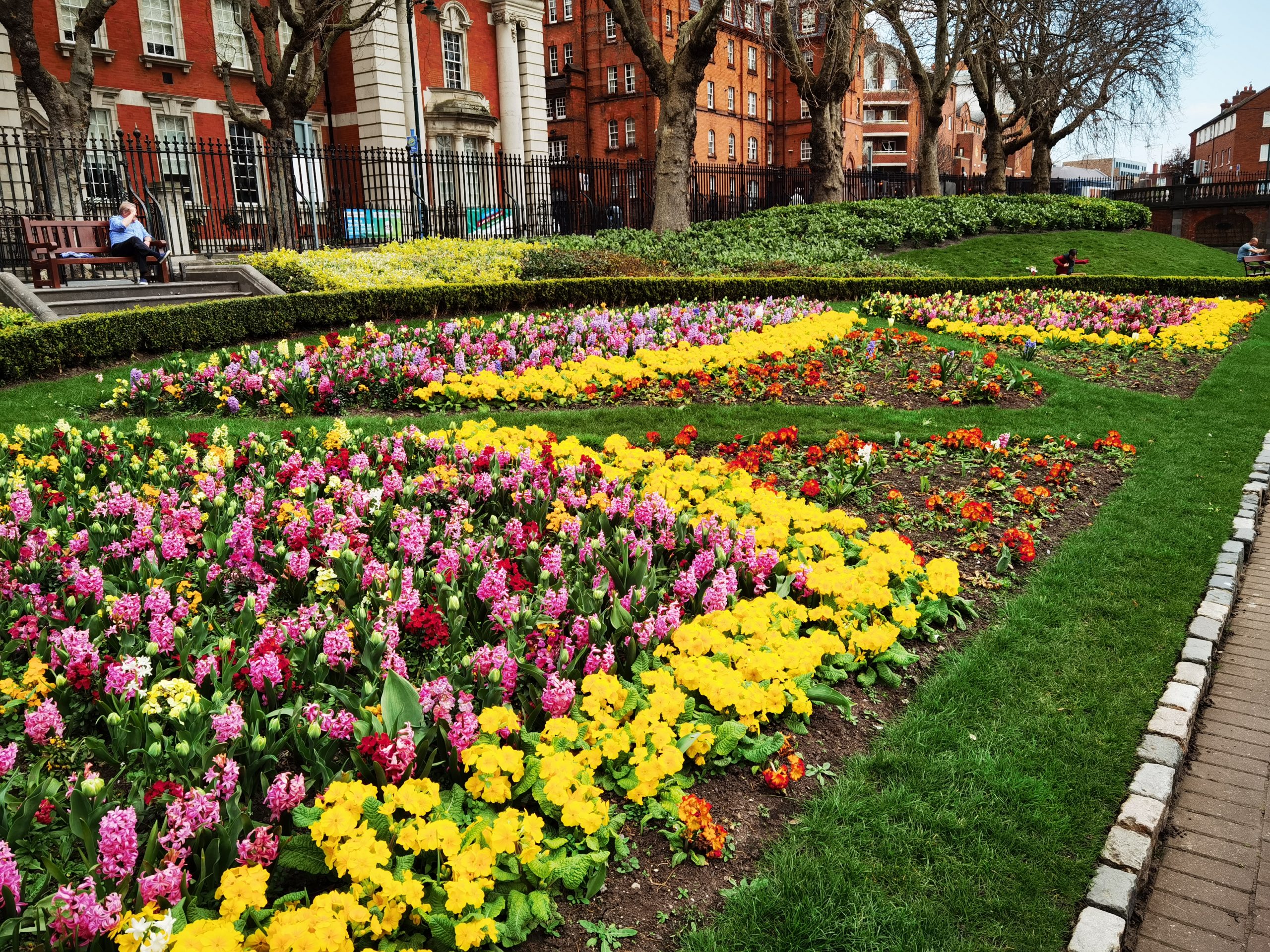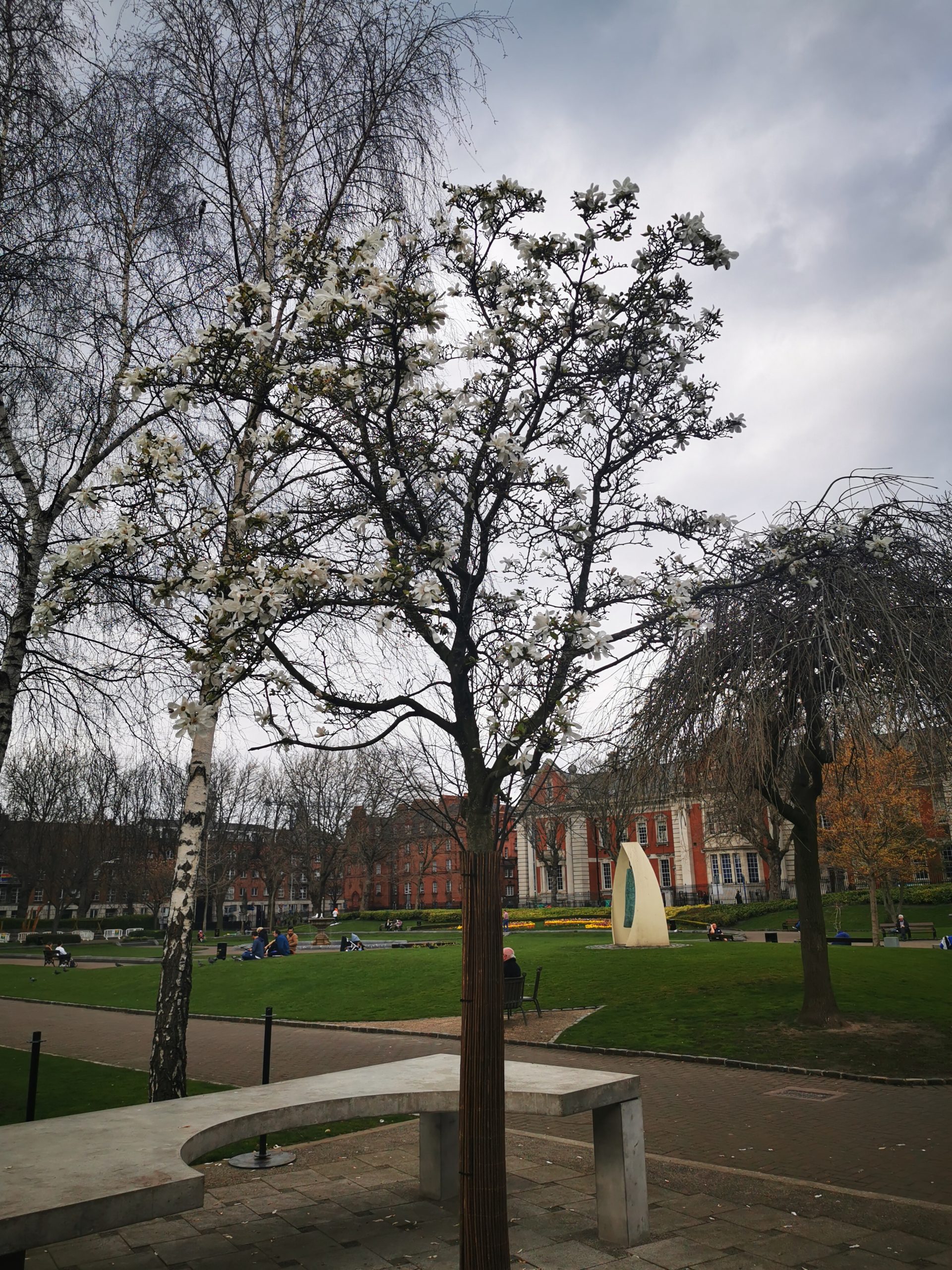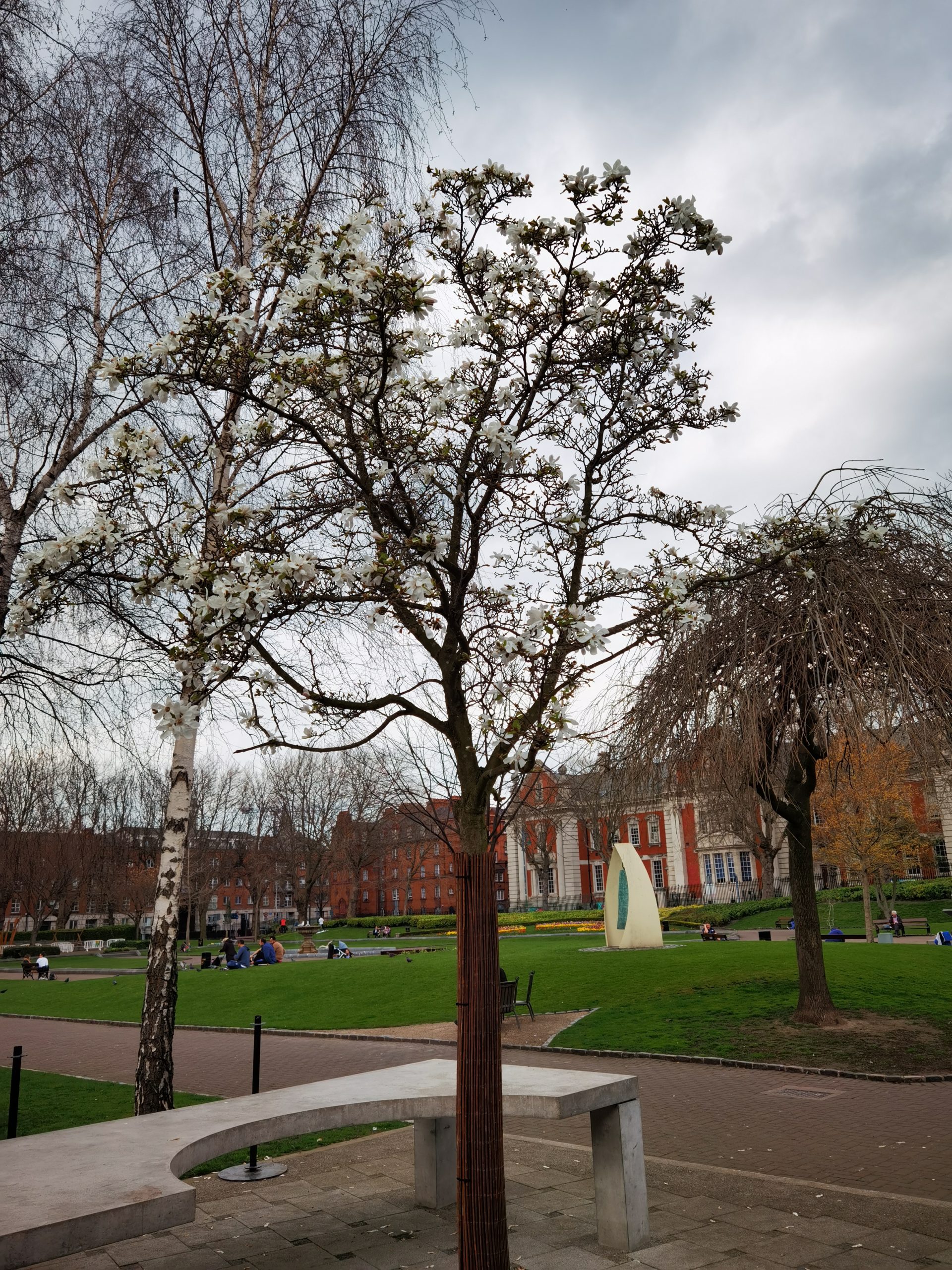It’s one of the most talked-about smartphone launches for quite some time. For that alone, I’m delighted the Huawei P40 Pro is ready to launch. I’ve been using Huawei phones for the past few years and I personally believe they’ve been a breath of fresh air in a very stale market. It really all began with the P20 Pro, before moving through a few quite remarkable phones and landing on today. Today, I’m using the P40 Pro and I’m here to tell you all about it.
Huawei Launch P40 Series
Obviously, because of the way the world is today, Huawei restricted the launch of the P40 Series to an online only broadcast. Prior to the event, Huawei had already launched the P40 Lite so this event would focus on the P40, P40 Pro and the new member of the family, the P40 Pro+. Huawei had sent me a P40 Pro to test out the day before the launch and I’ve been using it since. So without further ado, here’s what I think of it.
Does The Huawei P40 Pro Have A Good Display?
I always say that so many features on phones are totally down to individual preference. For example, some of you will insist on nerding out over the numbers and specs like screen pixel density. Others will fire more from the hip, looking out for design and what it’s like to watch a movie on. I’m not even sure what it is that I look for in a screen but what will say is that the P40 Pro has a brilliant screen.
On paper, it doesn’t have the 4K screen of some Sony phones or the pixel density of the Galaxy S20 Ultra or event the Galaxy S20+. However, in terms of innovation and experience, the P40 Pro screen really is something else. First of all, let’s chat about that overflow screen. When Samsung released the Galaxy S20+ with a 90.5% screen-to-body ratio, few believed we’d see better so quickly. Yet, thanks to a quad-corner overflow display the Huawei P40 Pro boasts an incredible 91.6% screen-to-body ratio. That tiny percentage has a massive impact on your experience when using the Huwaei P40 Pro.
Check out how much more screen is on show here, especially around the chin.
One of the key things that Huawei CEO, Richard Yu, alluded to during the launch of the P40 Pro was that this wouldn’t be a phone of “no compromise”. That phrase, “no compromise” has been a marketing rallying call for many products. But not for Huawei has decided to embrace compromise where it needs to in order to improve the overall user experience.
For example, many smartphone manufacturers are rushing to adopt 120Hz refresh-rate screens when the reality is 90Hz is plenty. If you’ve never through about your screen refresh rate, I can promise you this spec will make zero difference to you. If you’re a hardcore mobile gamer, it will make a difference. The key point here is that Huawei would rather go with 90Hz because they know 120Hz has a significant impact on your battery life. For me it’s compromise for the greater good.
Overall, the P40 Pro display is unique and allows you to be immersed in whatever it is you’re watching.
Huawei P40 Design
I wanted to bring the P40 Pro’s design in here next. It’s unavoidably linked to the display.
P40 Pro Is A Design Masterpiece
Indeed, I really like the display. The design is remarkable. For me, the dual cutout in the display for the front-facing camera isn’t a distraction at all. My first time using a phone with a display cutout for the front-facing camera was the Samsung Galaxy S10+ so I’m not surprised that it didn’t distract. The move to having a cutout front-facing camera means that Huawei once again relied on an in-screen speaker. The good news is this is much improved from last year’s P30 Pro and sound quality has massively improved too.
You could actually take this in-screen speaker quality improvement as a measuring stick for Huawei’s development over the years. I remember back when I was working in a phone shop selling the old P8 and P9 that the major issue with Huawei’s flagship phone was the plastic feel. The build quality meant the phone would rattle and vibrate when on a call. They weren’t bad phones at all, they were just missing something.
Broadly speaking, what impressed me about the P40 Pro design is that Huawei has managed to make a more premium feeling P Series phone. In the past, I’ve always felt the extra-premium feel was reserved for the Mate Series. After getting to grips with the Mate 30 Pro to test out Huawei’s Mobile Services and Huawei AppGallery, I’m glad to report the P Series is right up there in terms of premium build and design.
Now, the Huawei P40 boasts a brilliant innovative screen housed in an aluminum frame with a gorgeous matte material back. I’m very pleased with the back of the phone because, for once, whatever they’ve made this from isn’t an absolute fingerprint magnet. It might not be what everyone looks for but that’s a bugbear for me.
P40 Pro Design Flaws
As wonderful as the P40 Pro is, I’m going to call out the two design quirks I noticed. First of all, try not to leave your phone face down on surfaces. As was the case with the P30 Pro, the P40 Pro does not have Gorilla Glass. While the screen is supposed to be durable enough, I personally just believe screens not using Gorilla Glass are more susceptible to scratches. Sure enough, even in isolation and barely leaving the house, I managed to get a little nick on the screen. So my advice to you is, from day one, get yourself a screen protector, preferably a tempered glass protector.
Scratches can come about from your pocket, day to day life, or as I said above, leaving your phone face down. Leaving your phone face down becomes more likely because of the second design flaw in the P40 Pro. The camera array on the back of the P40 Pro is huge. Like, it’s obnoxiously big. For me, it’s not a problem but it’s a design quirk which might leave some users annoyed every time their phone is left on a table. It’s such a silly thing but how your phone rests on a table can bother some people.
Now, the reason the size of the camera array doesn’t bother me is that the P stands for photography and that camera array is packing some essential hardware that gives the P40 Pro its main selling point. Its camera.
P40 Pro Camera
There have been a lot of question marks looming over the P40 Series. With many questions being asked, few questioned the P40 Pro would have a brilliant question. That’s simply because Huawei has form here. For as long as I can remember, even in those early days with the P8, Huawei flagship phones have had fantastic cameras. That was brought to the next level with the P20 Series. Here we are, two iterations later and, to be honest, on paper the P40 Pro hardware is underwhelming. When compared to the P30 Series there aren’t that many dramatic departures.
Here’s a comparison between the P30 Pro and P40 Pro camera features:
| P30 Pro | P40 Pro | |
| Rear Lenses | 40 MP, f/1.6, 27mm (wide), 1/1.7″, PDAF, OIS Periscope 8 MP, f/3.4, 125mm (telephoto), 1/4.0″, PDAF, OIS, 5x optical zoom 20 MP, f/2.2, 16mm (ultrawide), 1/2.7″, PDAF TOF 3D, (depth) | 50 MP, f/1.9, 23mm (wide), 1/1.28″, 2.44µm, omnidirectional PDAF, OIS Periscope 12 MP, f/3.4, 125mm (telephoto), PDAF, OIS, 5x optical zoom 40 MP, f/1.8, 18mm (ultrawide), 1/1.54″, PDAF TOF 3D, (depth) |
| Rear Features | Leica optics, dual-LED dual-tone flash, panorama, HDR | Leica optics, LED flash, panorama, HDR |
| Rear Video Ability | 2160p@30fps, 1080p@60fps, 1080p@30fps (gyro-EIS), 720p@960fps | 2160p@30/60fps, 1080p@30/60fps, 720@7680fps, 1080p@960fps, HDR; gyro-EIS |
| Seflie Modules | 32 MP, f/2.0, 26mm (wide), 1/2.8″, 0.8µm | 32 MP, f/2.2, 26mm (wide), 1/2.8″, 0.8µm, AF IR TOF 3D, (depth/biometrics sensor) |
| Seflie Features | HDR | HDR |
| Selfie Video | 1080p@30fps | 2160p@30/60fps, 1080p@30/60fps |
The big jumps come in the selfie camera and the video ability of the phone. Video capture was a big focus of the Mate 30 Pro launch and it looks like this is the next evolution for Huawei. While this won’t be much of a big deal for casual weekend filmmakers, this will be music to vloggers’ ears. The big jump here is being able to shoot 4K front-facing video at 2160p@30/60fps. The reason that awesome is because you usually have to make a trade-off. If you want the highest quality from your phone video you can’t see the screen. Not any more as your selfie camera can shoot video just as well (ish) as your primary camera.
Another feature brought over from the innovations of the Mate 30 Pro is cinema-grade slow-motion. Honestly, this slow-motion is mind-blowing. There are some awesome examples of testing this with water balloons which I will revisit myself, but because I’m largely locked indoors, I was limited to using a lighter. Bloody hell though, the 7680fps slow-motion is just silly good. Here’s a 30-second video that took a fraction of a second to make. Get your head around that one.
All of the video features aside, you’re really here for the photography – or at least most people will be. Not only am I mighty impressed with the P40 Pro camera, but so too are people who rate cameras for a living. The P40 Pro has once again been crowned the best smartphone camera on the market by DXOMARK.
The funny thing about this rating for me is that this isn’t just down to brilliant hardware. The P40 Pro is home to the Kirin 990 5G processor. I rarely nerd out over processors because I generally don’t believe it to be very consumer-friendly review material. However, the power of this processor is very important to get across. This processor allows your P40 Pro to quickly determine what you’re shooting, define edges and subjects while also choosing various settings like colour balance and white balance. The result is incredibly vivid shots and stunning bokeh Portrait images.
Here are some comparative shots between the two phones. Remember, for me the big difference here is the AI running on the Kirin 990 5G chip. While the P30 Pro is still impressive, the P40 Pro just outperforms it.




The usual question I get asked is “I have a P30 Pro, do I need a P40 Pro?”. As a rule of thumb, when there’s a year between smartphone launches, the answer is no. While there are some nice AI-assisted features like Remove Passersby from your shots and the remarkable ability to remove reflections, I’m not convinced the camera offers enough to make the jump from the P30 Pro. But if you are running any other smartphone or even a P20 Pro, and you’re in the market for a photography-based smartphone, the P40 Pro has got to be top of the list.
Now, while it’s top of the list, there’s another massive question mark hanging over the P40 Pro, especially if you have something like a P30 Pro. What’s it like moving from a phone with Google Mobile Services to Huawei Mobile Services.
The Big P40 Pro Question: Huawei Mobile Services
I’m looking forward to the day where I can stop writing this line and maybe the P40 Pro helps with it. Google can no-longer officially support Huawei smartphones. This means new launches like the P40 Pro won’t have Google Play Services and apps like YouTube and the Google Play Store. While many have seen this issue as being Huawei without Google, I can really see the tables turning over time. I have already tested the Huawei Mate 30 Pro, purely to focus on the Huawei Mobile Services side of things. While I stumbled through some app installations and just couldn’t install some services, overall it wasn’t too bad an experience given the pace Huawei has had to try and get into position to compete with Google and Apple.
There are certain aspects of using HMS which are well underplayed too. While some might scoff at the thought of promoting privacy considering some of the headlines Huawei has endured, the truth of the matter is if you think Huawei should be a concern, Google absolutely is too. What I realised while trialling HMS is just how deeply Google has buried itself in my life. Also, what shocked me is how relatively easily I removed it too. It still pop up as an issue every now and then, and I’m conscious that in isolation my need for Google Maps is lowered, but it’s somewhat liberating moving away from Google.
Instead of Google Assistant, I’ve installed Alexa as my personal assistant. One for the privacy people. You can’t wake Alexa as an assistant on your smartphone by saying the wake word. You have to bring the assistant to life using screen gestures so there’s no accidentally over-hearing your conversations because of a misheard wake word.
There’s been another funny side-effect of my switch to HMS and whether or not this is positive is up to you. Because my apps rely on Google Mobile Services for push notifications, I’m being annoyed by my phone less. For example, my Twitter feed doesn’t buzz at me every five minutes yet my WhatsApp notifies me every-time I have a message. I’m sure this is down to the fact I’ve installed WhatsApp thorugh the official WhatsApp website while Twitter was carried over by Huawei’s Phone Clone.
I’m not going to deep into the details of living with HMS because it’s something I’ve gone into in greater detail during my testing of the Mate 30 Pro. I’m also very conscious of being perceived as a Huawei fan. I’ve been reviewing their phones religiously since the P20 Pro and I’m not really sure how to overcome looking biased. I guess I should embrace that I am indeed a fan of Huawei because their phones are excellent.
The truth of the matter for the P40 Pro is that some of you will buy it and adore it. Because of Huawei’s VIP setup service, you’ll be up and running with most of your favourite apps and you’ll enjoy this phone like people enjoyed their new P20 Pros and P30 Pros. As time goes on and the Huawei AppGallery continues to add new apps the focus will shift further and further away from what Huawei doesn’t support, instead shifting back towards the comparison between Huawei, Samsung and Apple.
Others will buy the P40 Pro and will immediately discover there’s a specific app they need that’s not available. One issue I discovered, was restoring purchased apps I’d paid for in the Google Play Store. Right now, it’s a no go though some app developers may honour refunds. For these reasons, the P40 Pro will just not be for everyone. If you’re really tempted but nervous, I’d recommend you buy online for the simple reason being you’ll have 14 days distance selling protection. As a consumer, this is EU law and it protects you when you shop online as you have the right to cancel and return your order within 14 days, for any reason and without the seller requiring a justification.
Huawei P40 Pro: The Verdict
It’s really tough to evaluate the Huawei P40 Pro purely because there are new variables in play. For the techies out there, there are fewer problems, but would I buy the P40 Pro for my mother? Huawei is going through a massive period of change. I’ve said myself that the benchmark I’m holding them to is Huawei Pay’s expansion. Yet, for many mobile payments doesn’t really matter that much. And that’s the problem.
The Huawei P40 Pro is the best phone on the market once again, once there’s not a really important app or service in your life that you simply cannot live without. Once the latter comes true, there’s an element of risk that sneaks into the equation. This is one of the most subjective smartphones on the market. One customer will brag about the camera to their friends while another will lament that they couldn’t control their LIFX lights.
So, without trying to be objective, what do I think?
What shocked me is that my SIM didn’t go back into my P30 Pro. A few months back, I thought I’d give up on the P40 Pro after testing. Instead, I’m fascinated by ditching Google and seeing how Huawei grows. The camera is stunning and, for me, is worth any smaller sacrifices in dropping some apps here and there. To be totally transparent, I am using my phone less whether that be because of the reduced push notifications or me not installing a few apps of lesser importance. I’m not sure that’s going to be a selling point for many but for me, it’s turned out to be a massive positive.
Somethings Remain Untested
As isolation eventually lifts, I think I’ll revisit this review again as I test some more camera features. I also want to test out life without Google Maps and whether or not I can still fly my drone. Also, I’ve not mentioned the battery at all in this review. My reason being that while it seems to be as impressive as previous Huawei smartphones, my lifestyle is just so different right now. I feel like I’m using my phone more than ever, yet the battery life is lasting longer than ever too. I’m just wary of testing some elements with isolation going on so I’ll update this article once further testing in normal life takes place.
If you’re thinking of buying but are still not sure about a certain app, drop us a message below or on social and we’ll test it out for you.
Huawei P40 Pro Launch Offer
The final thing I’ll mention for now is that Huawei is rightly sweetening the deal when it comes to the P40 Pro launch. The phone launches on Tuesday 07.04.2020 and will be available from all major Irish networks. While I’m waiting for pricing, Huawei is throwing in some nice freebies with your P40 Pro. You’ll get:
- Huawei FreeBuds 3 worth €179 (I have these and love them)
- 12 months 50GB Huawei Cloud Storage
- 3 months Huawei Music


